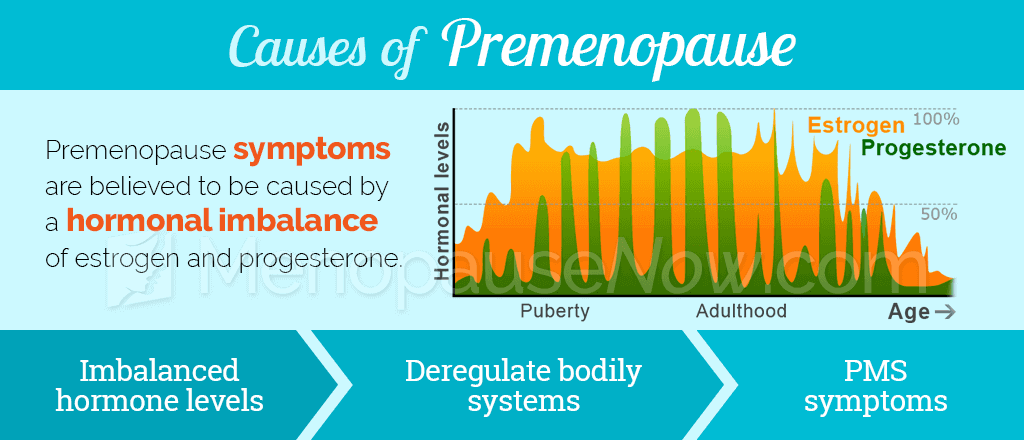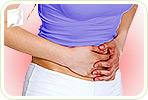For practically their entire adult lives, women hear about menopause as an event in the distant future. However, the menopausal transition actually starts sooner than most women think, with the first menstrual period during puberty. This first stage of menopause is referred to as premenopause, and it marks the beginning of women's reproductive lives.
Continue reading for detailed information about premenopause as well as the causes, symptoms, and possible treatments for any symptoms experienced during this life transition.
About Premenopause
Premenopause is the marked officially as the first stage in the menopause process, beginning with the first menstrual cycle and ending with the first signs of perimenopause.
Confusion might arise with these terms, and having a clear notion of all four stages of menopause is vital to thoroughly understand what happens over the course of a woman's reproductive life.
The four stages of menopause are identified as follows:
Premenopause. This is the first of the four menopause stages. During this time, a healthy woman has regular menstrual cycles and is able to reproduce as long as she has no fertility issues.
Perimenopause. Colloquially referred to as “menopause,” perimenopause is the second menopause stage during which a woman's eggs start to run out, causing abrupt hormonal fluctuations and a myriad of menopause symptoms, such as hot flashes and irregular periods. Women normally enter this stage in their mid-40s, but this can vary.
Menopause. Menopause is the third transitional stage, and it is a date that marks 12 consecutive months without a menstrual cycle. With this, the cessation of a woman's reproductive years has arrived.
Postmenopause. Postmenopause is the last stage of the menopause transition and starts the day after menopause is announced. Postmenopausal women should be wary of serious health complications that can arise due to a hormone deficiency, such as osteoporosis, dyspareunia, and heart disease.
Bear in mind that not all women go through the four menopause stages at the same age. If a woman is uncertain of when she is entering perimenopause, diagnostic tests for menopause can help clear up any confusion.

For more information about premenopause, click on the preceding link, or keep reading to find out about the causes of hormonal imbalance symptoms that can arise during this life stage.
Premenopause Causes
Premenopause is a natural reproductive stage that all women will go through. There is nothing that causes it other than from simply being a woman.
On that note, what women generally refer to when referencing premenopause causes are the causes of symptoms that can flare up during this stage.
The symptoms are more commonly associated with premenstrual syndrome (PMS), and as many as three out of four women claim to get them at some point in their lifetime.1
PMS symptoms are believed to be due to hormonal or external factors:
- Hormonal causes. An imbalance of estrogen and progesterone levels, two key reproductive hormones that guide the flow of the menstrual cycle on a monthly basis, may provoke symptoms during the week or two before bleeding in those who are more sensitive to the hormones' effects.
- External causes. These include prolonged physical or emotional stress; diets rich in refined carbohydrates; and unhealthy habits, like smoking.

Click on the following link to learn more about the causes of premenopause symptoms, or continue reading below to discover the symptoms of premenopause.
Premenopause Symptoms
Up to 150 symptoms have been recognized as part of premenstrual syndrome.2
Some of the most common ones include the following:
Physical symptoms
- Breast tenderness
- Acne
- Headaches
- Bloating
- Fatigue
- Abdominal cramps
Psychological symptoms
In general, PMS symptoms should not interfere with quality of life, and if so, women should speak with their doctors to find a solution for relief.
Also, women will notice that many are similar to those experienced during perimenopause as both reproductive stages are driven by hormones.

For more information about premenopause manifestations, click on the following link to symptoms of premenopause. Alternatively, continue reading to discover how women can treat the unpleasant signs and symptoms of premenopause.
Premenopause Treatments
The treatments for premenopause symptoms vary widely, but each treatment resolves mostly around balancing hormones and falls under one of three categories, which are as follows:
Lifestyle changes
When women present any discomfort, experts first recommend to take a look at habits. Usually, some simple lifestyle changes can have a great impact on overall well-being.
A healthy diet followed by regular exercise and stress reduction - of meditation or breathing exercises - are some of the measures to take.
Alternative medicine
While massage and aromatherapy are some of the alternative possibilities, herbal supplements are the leading alternative remedies.
They can be classified into two groups: phytoestrogenic supplements, which add plant-derived estrogen to the body, and hormone-regulating supplements, which stimulate natural hormone production.

Medications
Prescribed medications - like birth control pills or mood-regulating drugs - as well as pain relievers are the most popular form of pharmaceutical treatments for premenopause symptoms in the United States.
However, in recent years, discussion of hormonal treatments has focused on the risk of side effects they may pose, leading women in search of more natural methods to control their symptoms.
In sum, each of these different treatment levels has its own merits and drawbacks. It is often recommended that women first test the waters with non-invasive options, lifestyle changes and alternative medicine, and gradually move on to more invasive treatments if necessary.
Click on the following link to learn more about the different treatment options for premenopause treatments.
Sources
- Dickerson, L.M. et al. (2003). Premenstrual Syndrome. American Family Physician, 67(8), 1743-1752. Retrieved September 19, 2019, from https://www.aafp.org/afp/2003/0415/p1743.html
- MedlinePlus. (2019). Premenstrual Syndrome. Retrieved September 19, 2019, from https://medlineplus.gov/premenstrualsyndrome.html
- The North American Menopause Society. (n.d.). Are We There Yet? Navigate Now with Our Guided Menopause Tour. Retrieved September 12, 2019, from https://www.menopause.org/for-women/menopauseflashes/menopause-symptoms-and-treatments/are-we-there-yet-navigate-now-with-our-guided-menopause-tour
Footnotes:
- Office on Women's Health. (2018). Premenstrual syndrome (PMS). Retrieved September 19, 2019, from https://www.womenshealth.gov/menstrual-cycle/premenstrual-syndrome#13
- Society for Endocrinology. (2019). Premenstrual syndrome. retrieved September 19, 2019, from https://www.yourhormones.info/endocrine-conditions/premenstrual-syndrome/




